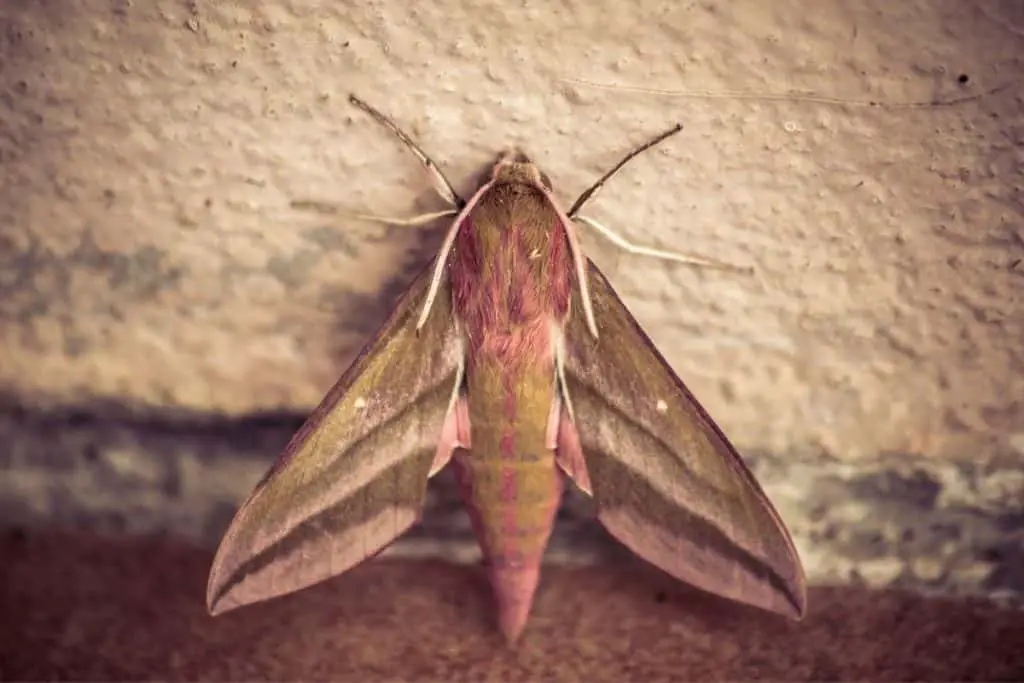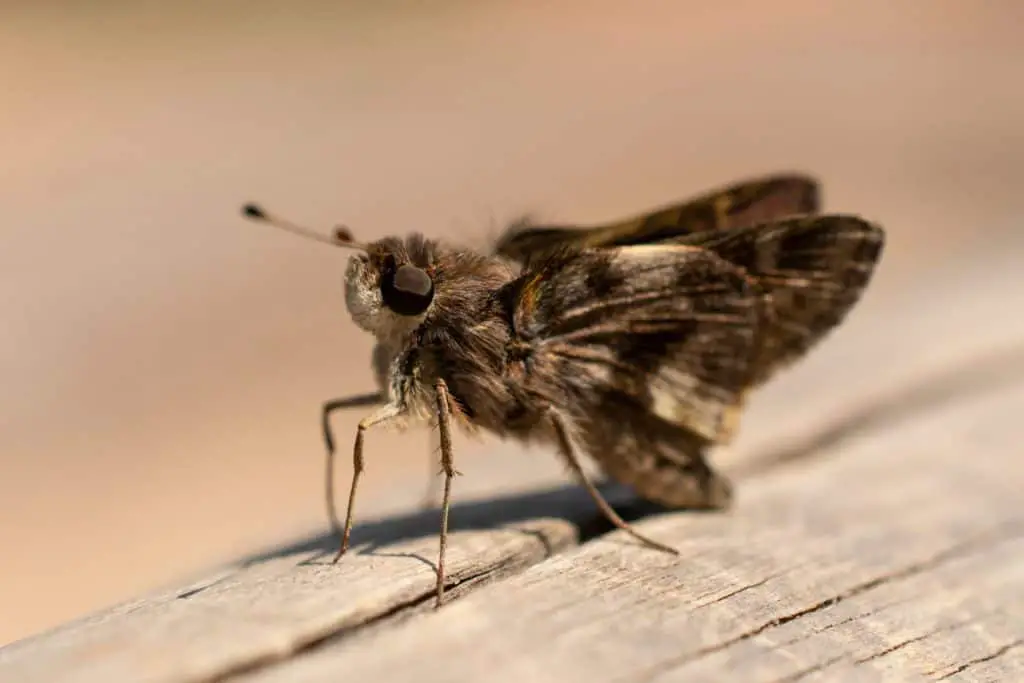Do you ever get up in the morning and find that your clothes have been eaten by moths? If so, you’re not alone. Moths love eating clothes, and they can do a lot of damage in a short period of time. But why do moths eat clothes in the first place?
Well, in this blog post, we will share 5 reasons why moths like to eat clothes. We will also provide you with some tips on how to protect and prevent your clothes from being eaten by moths.
1. Their Larvae Feast On Cotton And Synthetic Fabrics
It’s amazing just how quickly moths can ruin your clothes. However, your be surprised to learn that it’s not the moths themselves that eat your clothes “but their larvae”.
When the eggs hatch, the larvae start to feed on the clothing straight away. They love eating natural fibers like wool and silk, but they will also feast on cotton and synthetic fabrics.
The larvae go through several stages of growth, molting their skin, and getting bigger as they eat. Eventually, they spin a cocoon “which they will do on your clothes” and after a couple of days transform into an adult moth.
2. They Find Dirty Fabrics Very Attractive
Moths are attracted to dirty fabrics, especially if they have been used! For example, damp clothes can produce mold or mildew on the surface usually within 24 to 48 hours.
If you find that your clothes have been damaged by moth larvae, it’s important to remove them as soon as possible or they can spread to other clothes.
You can do this by vacuuming or brushing them off. However, if the damage is extensive, you may need to throw them out.
3. Their Larvae Get Sustenance From Eating Keratin
Moth larvae will eat the natural fibers in clothing, such as keratin. Keratin is a protein that is commonly found on animal fur coats.
These natural fibers are full of nutrients that moths need to survive. Additionally, these proteins give the moth larvae the energy they need to grow and develop into moths.
If you find that moths have been eating your clothes, it’s important to remove the affected garments from your closet. You should also wash these garments in hot water to kill any eggs or larvae that may be present.
4. Clothes Have Proteins From Our Skin And Hair
When we wear our clothes bits of skin and hair are left behind on the fabric. It’s these proteins that allow the moth larvae to survive and grow.
Even if you just wear your clothes for an hour, there will be enough skin and hair left behind for moth larvae to have a little feast.
So, if you’re finding moths in your wardrobe it’s probably because they’re after a quick snack.

Types Of Moths That Eat Clothes
Anyone who has ever had their clothes eaten by moths knows how frustrating it can be. Not only do you have to deal with the damage to your clothing, but you also have to contend with the tiny pests themselves.
There are two types of moths that are particularly notorious for eating clothes:
- Case-Making Moth (Tinea pellionella)
- Webbing Moth (Tineola bisselliella)
The casemaking clothes moth is particularly attracted to wool and fur, while the webbing clothes moth prefers cotton and linen. However, both types of moths larvae will happily munch on any type of natural fiber if given the opportunity.
Top Tip: Clothing made from synthetic materials is generally not at risk, as the moths are unable to digest these fibers.
How Many Eggs Do Moths Lay On Clothes?
The female clothes moth can lay between 50 and 100 eggs at a time on suitable fabric. However, these eggs are very hard to see at 0.50 mm in diameter and are usually laid near under the collar armpit areas of the clothes.
The eggs hatch in about 4 to 10 days, and the young larvae immediately start to feed on the fabric. The larvae are only a few mm long when they first hatch but can grow up to 1.0 to 1.5 cm if conditions are favorable.
They then spin a cocoon in which to pupate, and after about two weeks the adult moth emerges.
How To Tell If Moths Have Lay Eggs In Your Clothes?
Moths are attracted to natural fibers like wool and cotton, which is why they can often be found in closets and drawers where these items are stored.
If you think moths may have laid eggs in your clothes, you can look for small holes in the fabric or for cocoons attached to the fabric.
Moths typically lay their eggs near the collar and armpit area, so you may also find larvae or pupae on surfaces near your clothes. If you see evidence of moths in your clothes, it’s important to take action to remove the pests and prevent future infestations.
Things To Look For:
- Small holes in the fabric
- Clothes have an unusual smell
- Larvae or cocoons around the collar area
- Adult moths near your clothes closet

How Long Does It Take For Moths To Eat Clothes?
Moth larvae are notorious for their ability to eat through fabric, and they can do extensive damage to your clothes and other fabrics in just 1 to 2 weeks.
This is why it’s so important to take action as soon as you see evidence of moths in your home.
How To Prevent Moths From Eating Your Clothes?
The best way to protect your clothes from moth damage is to prevent them from getting into your closet in the first place. So here are a few tips to avoid your clothes being a target for moths.
- Vacuum pack your clothes
- Wash clothes at high temperature
- Store clothes in airtight containers
- Keep your closet clean and free of clutter
- Vacuum regularly, under furniture where moths may hide
- Use cedar hangers or sachets to repel moths
Vacuum Pack Your Clothes
One way to prevent moths from eating and damaging your clothes is to vacuum pack them. Vacuum packing your clothes will create an airtight seal that moths can’t penetrate and it will protect your clothes from dust, dirt, and other debris.
If you are storing your clothes for an extended period of time, vacuum packing is your best option to ensure that moths cannot eat them.
Wash Clothes At High Temperature
If you find that moths have laid eggs on your clothes, it’s important to remove them as soon as possible. You should put the affected clothes in the washing machine on a hot wash of (48 degrees celsius) as the high temperature will kill the eggs.
If the damage is extensive, they may be no way to salvage the clothing and you may have to throw it away.
Store Clothes In Airtight Containers
Another way to prevent moths from eating your clothes is to store them in airtight containers. This will create an environment that is inhospitable for moths, and like in vacuum packets it will also protect your clothes from dust and other debris.
There are a variety of airtight containers on the market, so you should have no problem finding one that is suitable for your needs. You should use ones that have a tight-fitting lid and are made of sturdy plastic, not metal.
Keep Your Closet Clean And Free Of Clutter
Keeping your closet clean and free of clutter is one of the best ways to prevent moths from infesting your clothes.
Moths are attracted to dark, cluttered, and humid environments, so by keeping your closet clean and tidy, you will make it less inviting for them.
You should vacuum your closet regularly and wipe down surfaces with a damp cloth. You should also keep clothing off the floor and away from walls to allow air to circulate properly.
Vacuum Regularly, Under Furniture Where Moths May Hide
As well as vacuuming your closet, you should vacuum regularly under furniture where moths may hide. Moths are attracted to dark and humid environments, so by vacuuming these areas, you will remove their hiding places and make your home less inviting for them.
Also when vacuuming these areas check your carpet for any signs of moth damage. If you find any, it’s important to treat the area as soon as possible to prevent the spread of damage.
Use Cedar Hangers Or Sachets To Repel Moths
Cedar is a natural moth repellent, so using cedar hangers or sachets in your closet will help to keep moths away from your clothes. You can also hang these in your drawers or anywhere else you store your clothes.
Be sure to use real cedar and not a cedar-scented product as the scent will fade over time and will no longer be effective at repelling moths.
If your unsure where to buy these repellents, your local hardware store should have them in stock. If not, you can check online stores such as amazom.com.
What Other Fabrics Do Moths Eat?
While most moths are attracted to clothes made of natural fibers like wool or cotton, they will also eat other fabrics such as:
- Fur
- Silk
- Rugs
- Wool
- Carpets
- Tapestries
- Feathers
The larvae of some species of moth are particularly fond of fabrics like polyester and rayon. In fact, the larvae can do serious damage to clothing made of these materials.
They will often go after the fabric that is stained with sweat or other body fluids, as these areas are particularly rich in nutrients.
Conclusion
So as you can see moths can be a real problem if you’re not careful. But by following the tips in this article, you can prevent them from eating your clothes and causing damage to your home.
If you’ve enjoyed this article and have found it very useful please feel free to check out some more of our posts and see what else you can learn!
